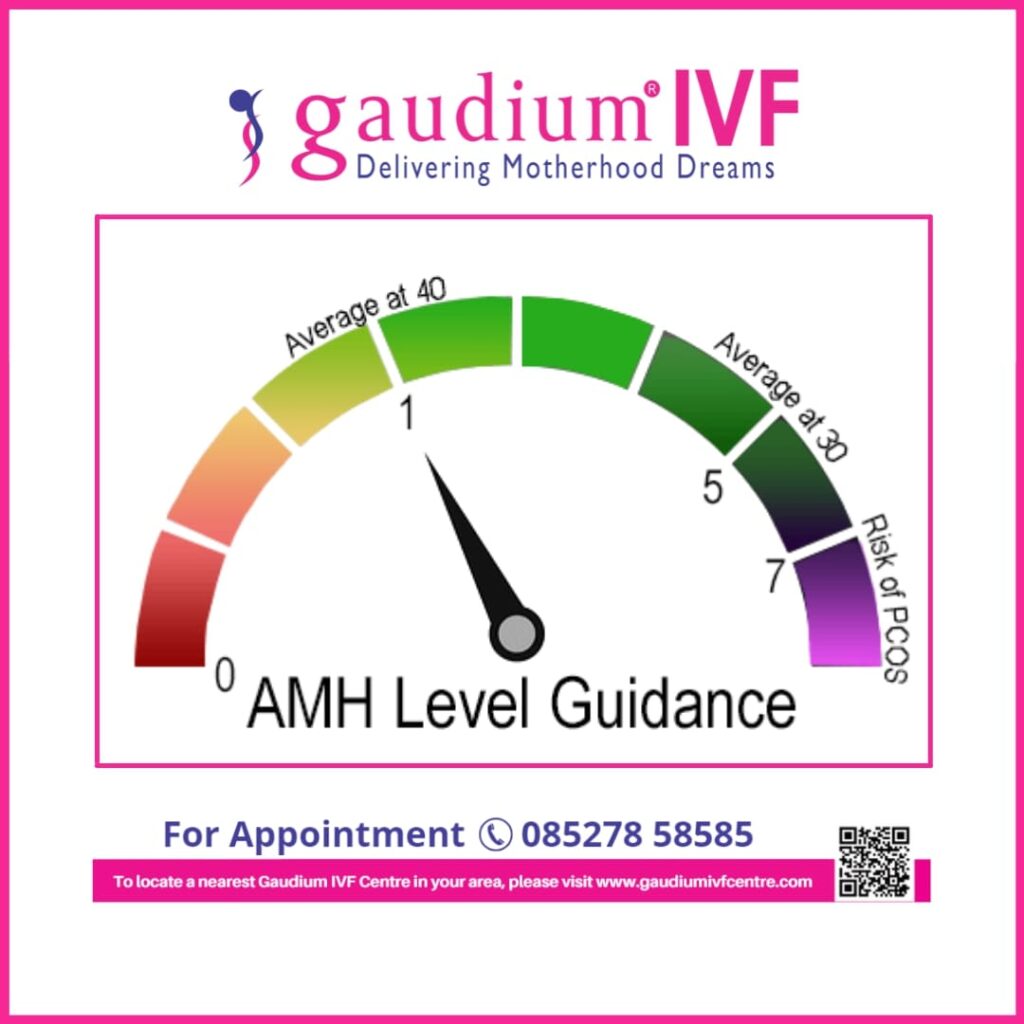
What is AMH?
Anti-Mullerian Hormone (AMH) is produced by follicles in ovaries and reflects Ovarian reserve.
Basically, AMH is an indicator of ovarian reserve in women, created by the granulosa cells of the antral follicles and then it is released in the follicular fluid and blood vessels.
The AMH progressively starts increasing in women from the day of birth and reaches at its peak around the age of 25, it starts decreasing gradually & becomes undetectable by the time of menopause.
How to check the AMH levels?
A blood test is done to check the value of AMH .
The normal range of AMH in women is taken as 1-4 ng/ml.
This value gives an idea of how urgently a woman needs to seek treatment and how her body will respond to it. Both the low and high levels of AMH are pathological and cause a hindrance in conceiving naturally.
Low AMH and its causes
Low AMH means that the woman’s ovarian reserve is rapidly declining Any value less than 1 ng/ml is considered as low, and needs urgent medical supervision.
- Age: As age increases the number of eggs decreases.
- Stress: long term stress and depression also contributes to lowering the AMH value.
- Ovarian surgery: surgery in which part of the ovary is removed and has affected blood supply of the ovary, causes the decline in AMH value.
- Hormonal Imbalance
- Endometriosis
- Inherited genetic causes
Low AMH only indicates that there is a low ovarian reserve, which means the number of eggs in the ovaries are less, the chances of a mature good quality egg and its fertilization are less, hence the decreased chances of getting pregnant.
IVF in low AMH values:
IVF is a potential option, which makes optimal use of these limited left oocytes in the ovaries.
IVF with an appropriately designed protocol of treatment keeping in mind the condition . ie- properly designed ovarian stimulation or an IVF with donor egg results in conceiving successfully through IVF.
Conditions of high AMH
1). PCOS ( poly cystic ovarian syndrome ): In women with PCOS, the ovary does not receive the correct signals from the pituitary to produce the hormone it needs for any of the eggs to fully mature. The follicle that holds the egg still grows and fills with fluid. However, there is no mature egg to rupture it, so it remains as a cyst.
2). Granulosa cell tumour
Again an important thing not to forget is that AMH only marks the quantity of the eggs, not the quality which is more important for forming good quality embryos.
Conclusion: A higher or low AMH doesn’t mean that getting pregnant is a far stretched dream .You just need the right treatment at the right time with the Best team of Infertility Experts.
You may also link with us on Facebook, Instagram, Twitter and YouTube.



